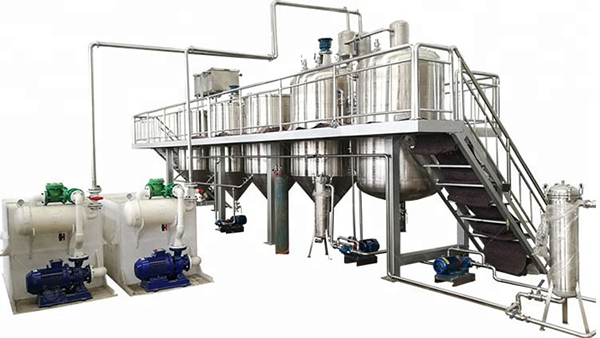The Soya Oil Refining Process is crucial for transforming crude soybean oil into a purified product that is safe for consumption and ideal for industrial applications. As I delve into the intricacies of this process, I invite you to explore how each step enhances the quality and stability of the oil, ultimately resulting in a product that meets stringent food safety standards.
The first step is degumming, which aims to eliminate phospholipids that can destabilize the oil. I remember witnessing firsthand how hydrating these phospholipids using water or dilute acid allows them to become insoluble, thus simplifying their removal by centrifugation. Alternatively, using enzymes for this phase results in an even higher quality product.
Next comes neutralization, a vital process for removing free fatty acids (FFAs) that negatively affect taste and shelf life. I’ve seen the transformation occur when sodium hydroxide is introduced; it reacts with FFAs to form soap, which can be easily separated. This not only enhances flavor but also improves the oil's stability.
The bleaching process follows, where I was astonished by the way bleaching earth absorbs color pigments and trace metals. Heating the mixture under vacuum prevents oxidation, leaving behind light-colored, visually appealing oil, ready for commercial sale.
One of the most fascinating phases is deodorization. By subjecting the oil to high-temperature steam distillation in a vacuum, unpleasant odors and flavors are eradicated. The neutral taste achieved in this step makes the oil a reliable choice for cooking and food processing.
Lastly, I would like to introduce you to winterization. This optional step is critical for oils used in salad dressings or other cold applications. By cooling the oil, waxes crystallize, and a simple filtration removes these impurities, ensuring the oil remains clear, even in cooler conditions.
Once deodorization is complete, and if winterization is performed, a final filtration ensures that no residual impurities linger. The Soybean Oil Press Machine plays a pivotal role throughout these processes, optimizing production for high-quality, refined soya oil.
In conclusion, the soya oil refining process enhances the natural properties of crude oil, making it safe, stable, and appealing for various uses. As I reflect on this journey, I am continuously amazed by how each step harmonizes to create a product that serves both consumer needs and meets industry standards.



